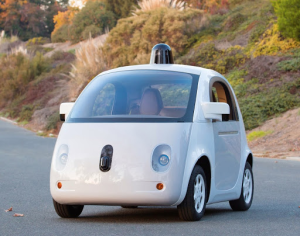Yesterday, a self-driving car began an historic journey, the first time that an automated car drove across the country. The 3,500-mile trip from California to New York is the longest automated drive to ever be attempted in North America. The car in question is Delphi Automotive PLC’s vehicle. Delphi’s Chief Technology Officer said that the car has already been successfully tested on the streets of both California and Las Vegas, although this cross-country test marks the ultimate test for the car. The vehicle will be challenged under various driving conditions, ranging from changing weather and terrain to potential road hazards, which could never be properly tested in a lab. The car is supposed to be able to navigate 4-way stops, merge onto highways and even move around cyclists and pedestrians, without any driver. A driver shall be present in the car to take over if need be, who can take control of the car immediately in case of emergency.
Experimentation of self-driving cars have been happening since at least the 1920s, although research has begun to accelerate since the 2010s. As of 2013, numerous major automotive manufacturers, including General Motors, Ford, Mercedes Benz, Volkswagen, Audi, Nissan, Toyota, BMW and Volvo, have been testing driverless car systems, with Google’s self-driving cars in many ways capturing the mainstream media. Recently, popular Internet personality Matthew Inman, better known as “The Oatmeal”, rode in a Google car. He described the cars as being extremely timid, although Google can adjust the level of aggression for the car. While Inman spoke highly of the Google car, he ultimately also said that it isn’t yet fully developed, and that it has issues with many of the scenarios that actual drivers face, such as handling yellow lights and four-way stops. Self-driving cars use a mixture of 3D laser-mapping, GPS and radar to analyze and interpret their surrounding. The radar in the car allows it to see through objects, as opposed to relying on line-of-sight. These cars still can’t drive in snow or heavy rain, and there are various complex situations that they can’t process to well, such as passing through a construction zone.

